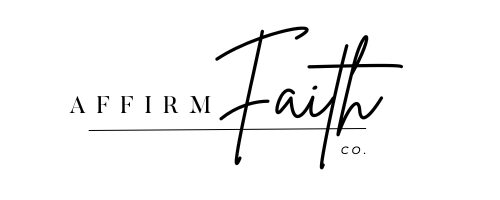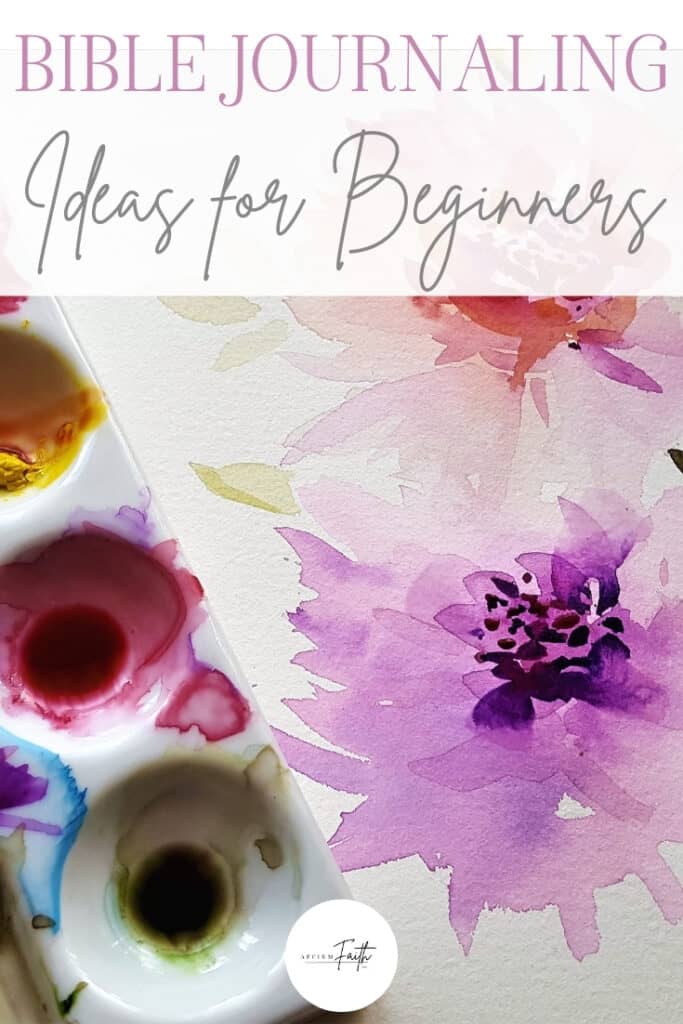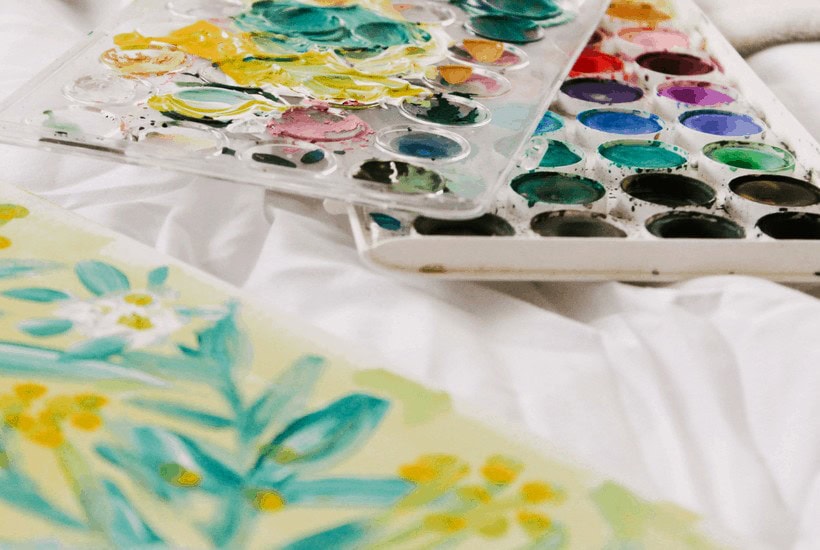Bible Journaling Ideas for Beginners: A Creative Path to Spiritual Growth
Please note that this article may contain affiliate links. As an Amazon Associate, I earn on qualifying purchases at no additional cost to you. You can read more at the bottom of this page or read my full disclosure on my Affiliate Disclosure Page
Bible journaling is more than just a creative hobby — it’s a deeply personal way to connect with Scripture and reflect on your walk with God. For beginners, it offers a simple yet powerful opportunity to interact with the Word in a way that feels both engaging and authentic. Whether you’re doodling in the margins or thoughtfully writing down prayers, Bible journaling makes the pages of Scripture come alive with meaning tailored to your journey.
You don’t need to be an artist or invest in expensive supplies. You simply need a heart open to God’s Word and a willingness to express that in your own unique style. In this guide, we’ll share practical tips and creative Bible journaling ideas specifically designed for beginners — whether you’re using a journaling Bible, a notebook, or a sketchpad.
Choose a Journal or Journaling Bible That Inspires You
Before you dive into your first journaling session, take a moment to choose a journal or Bible that makes you feel excited and inspired. There’s no one-size-fits-all option — some people prefer using a wide-margin journaling Bible, while others feel more comfortable with a blank notebook, sketchbook, or even a digital journaling app.
If you’re a visual person, consider a journaling Bible with illustrations or room for art. If you’re more focused on reflection and writing, a lined notebook may be all you need. The key is to find a format that feels personal and welcoming. This will help you create a space where you feel free to engage creatively with Scripture — without fear of making mistakes.
Some features to consider:
- Single-column Bibles: Great for visual journaling, with wider margins.
- Interleaved Bibles: Feature a full blank page opposite every Scripture page for creative freedom.
- Classic notebooks: Affordable and flexible, especially if you’re just exploring the process.
- Decorative covers: Sometimes the aesthetic alone can spark inspiration.
Remember, this is your journaling journey. Whether it’s a simple spiral notebook or a beautifully bound Bible, choose something that reflects your style and encourages your spiritual growth.
Must-Have Supplies for Creative Bible Journaling
One of the best things about Bible journaling is that you can start with what you already have. You don’t need a craft room full of tools or a drawer of fancy pens. In fact, the most important supply is your willingness to connect with God creatively.
Here’s a breakdown of beginner-friendly supplies to consider:
Basic Essentials
- Pens: A good black pen (like a Micron or gel pen) for writing and outlining.
- Colored pencils: Ideal for shading, coloring, and adding soft details without bleeding through pages.
- Highlighters: Use these to mark favorite verses or keywords (look for non-bleed options).
Creative Add-Ons
- Washi tape: Colorful, patterned tape that’s perfect for borders or adding flair.
- Stickers & printables: Pre-made faith-themed elements you can add with ease.
- Stencils: Help create neat shapes, headers, or lettering when you’re not confident freehand.
- Stamps and ink pads: Great for repeated motifs and texture.
- Glue stick or double-sided tape: For attaching notes, photos, or printables to your pages.
Pro Tip for Beginners
Start small and grow over time. Many beginners become overwhelmed when buying too many supplies up front. Pick 2–3 tools to begin with, experiment, and then add more as your confidence grows. Remember, Bible journaling is about connection, not perfection.
If all you have is a pen and a notebook, that’s more than enough to begin.
25+ Bible Journaling Ideas for Beginners
Whether you’re journaling in the margins of your Bible, in a notebook, or on separate pages, having a list of prompts and ideas can help you overcome blank-page paralysis and stay inspired. These beginner-friendly ideas range from simple layouts to faith-focused prompts, helping you grow creatively and spiritually.
1–5: Scripture Verse Prompts (Write + Reflect)
- Write out Psalm 23 and doodle a sheep or pasture around it.
- Highlight John 3:16 in bold lettering and surround it with a heart motif.
- Illustrate the fruits of the Spirit (Galatians 5:22–23) with hand-drawn fruit.
- Journal your favorite Bible promise (e.g., Isaiah 41:10) and write a personal reflection beside it.
- Trace the word “grace” next to Ephesians 2:8 and add soft watercolor accents.
6–10: Layout & Design Ideas
- Draw a simple frame around a verse and color the border.
- Use washi tape to divide a page into sections: verse, prayer, observation.
- Create a visual “timeline” for a Bible story (e.g., the life of Joseph).
- Sketch a banner or ribbon header for each new book you study.
- Use bubble lettering for key words like “faith,” “love,” or “trust.”
11–15: Prayer and Worship Ideas
- Write a letter to God and include the verse that inspired it.
- Add song lyrics from your favorite worship song next to a relevant Scripture.
- Make a “Prayer of the Day” corner on each page.
- Record answered prayers with a date and verse of gratitude.
- Use a sticker or symbol (like a star or cross) to mark pages of spiritual breakthrough.
16–20: Emotional and Topical Prompts
- Journal a page about fear using 2 Timothy 1:7 as your anchor.
- Create a gratitude list under Psalm 100.
- Illustrate a storm and rainbow next to God’s promises in Genesis 9.
- Write about a recent struggle and how Philippians 4:13 applies to it.
- Doodle or paint flowers around verses on renewal (e.g., Romans 12:2).
21–25: Seasonal or Themed Inspiration
- For Easter, reflect on the resurrection using Matthew 28:6.
- For Christmas, illustrate the nativity with Luke 2:11.
- Create a “Back to School” journal with verses about wisdom (James 1:5).
- Journal a New Year’s resolution with Proverbs 3:5–6.
- Create an autumn-themed page with verses on harvest and thankfulness.
Bonus Idea: Personal Bible Verse Index
Keep a running index of your favorite verses and ideas for how to journal them later. This is especially helpful when you feel stuck or want to revisit a Scripture with fresh eyes.
Selecting the Right Verse to Start With
One of the most common roadblocks for beginners is simply not knowing where to begin. With 66 books and thousands of verses, it can feel overwhelming to choose a starting point. The good news? There’s no wrong answer — but choosing a verse that already holds meaning to you can make the process smoother and more meaningful.
Tips for Picking Your First Verse
- Go with a favorite: Is there a verse that has comforted, inspired, or guided you in the past? Start there.
- Use a devotional: If you’re following a daily devotional or Bible reading plan, pick a verse from that day’s reading.
- Start with the Psalms: The Psalms are poetic, emotional, and visually inspiring — perfect for journaling.
- Reflect on a life theme: Are you in a season of waiting, healing, or growth? Search for verses that speak to that theme.
Beginner-Friendly Verses & Matching Ideas
- Philippians 4:13 – Use bold lettering and symbols of strength (e.g., mountains, weights, light rays).
- Psalm 46:10 – Illustrate still water or peaceful landscapes to reflect on “Be still.”
- Proverbs 3:5–6 – Create a winding road to symbolize trust and direction.
- Isaiah 40:31 – Draw soaring eagles or feathers.
- Romans 8:28 – Journal a reflection on how God works through your current situation.
The most important thing is to just start. Once you’ve journaled one verse, you’ll find your confidence and creativity beginning to flow.
Prayerfully Reflect Before You Create
Bible journaling isn’t just about creativity — it’s about connection. Before you begin writing, painting, or designing, take a moment to invite God into your time. This practice turns journaling from an activity into an act of worship.
Why Prayer Matters in Bible Journaling
Prayer centers your focus, quiets distractions, and opens your heart to what God wants to reveal through His Word. It shifts your mindset from performance to presence — reminding you that this is about relationship, not results.
Simple Prayer to Begin Journaling
“Lord, thank You for this time to be with You and in Your Word. Quiet my heart, clear my mind, and inspire my spirit. Show me what You want me to learn and how to express it. May every stroke, word, or color bring me closer to You. Amen.”
Journaling Idea: Prayer + Verse Combo
Try writing a short prayer next to every verse you journal. It could be:
- A personal response (“Lord, help me trust You with all my heart today.”)
- A word of gratitude (“Thank You for Your promises, even when I feel uncertain.”)
- A prayer for someone else inspired by the passage.
When prayer becomes part of your creative rhythm, Bible journaling transforms into a beautiful, two-way conversation with God.
Keeping It Simple: Your Style, Your Way
One of the most freeing truths about Bible journaling is this: there is no right or wrong way to do it. You don’t have to be artistic, trendy, or even especially creative to benefit from this practice. What matters most is that it reflects your heart and helps you engage more deeply with God’s Word.
Some beginners worry that their pages aren’t “pretty enough” — especially after scrolling through social media filled with intricate designs and professional-looking layouts. But remember, this is not a contest or a craft show. This is worship. And God delights in every sincere expression of love and reflection, no matter how simple.
Ideas for a Minimalist Journaling Style
- Use one highlighter color and a pen — write the verse and a few words of reflection.
- Add a hand-drawn icon (like a heart, cross, or star) to mark important verses.
- Create a simple border or underline key phrases for emphasis.
- Write one-word summaries (e.g., “trust,” “hope,” “mercy”) in the margin to reflect your takeaway.
Encouragement from Beginners
“I started with just a pen and a highlighter, and that was enough to help me remember what God was teaching me.”
— Emma, first-time journaler
“My pages are super messy (and sometimes colored by kids), but they’re mine. It’s like my Bible has become a scrapbook of my conversations with God.”
— Lydia, journaling mom of three
However you choose to journal, let it be a reflection of your walk — honest, evolving, and uniquely yours.
Troubleshooting Common Beginner Fears
Let’s be honest: starting something new, especially something as personal as Bible journaling, can feel intimidating. What if you mess up a page? What if you’re not artistic? What if someone sees your journal and judges you?
Take a breath — these worries are incredibly common, and they’re all part of the process. Here’s how to navigate them with confidence and grace.
“What if I mess up?”
You will make mistakes — and that’s okay. Mistakes are often where the most meaningful learning happens. Try these fixes:
- Use gesso to cover errors and create a new surface.
- Add a layer of washi tape, a sticker, or printable art.
- Simply write over it or incorporate the “mistake” into your design.
Remember, perfection isn’t the goal — connection is.
“I’m not creative or artistic.”
You don’t need to be! Bible journaling isn’t about art skills; it’s about engaging with Scripture in a personal way. Even simple handwriting, underlining, or using a single color to highlight verses is meaningful. If creativity flows, great. If not, your written reflections are just as valuable.
“I don’t know what to write.”
Start small. Copy a verse word for word. Add a one-sentence prayer. Write a single word that stands out. The more you do this, the more your thoughts will begin to flow naturally.
“Is it okay to write in my Bible?”
This is a personal choice. If writing directly in your Bible doesn’t feel right, use a notebook, a journal, or printable pages instead. There are many ways to participate without altering the physical Bible.
God isn’t looking for perfect pages — He’s looking for your heart.
How to Journal in a Notebook (and not your Bible!)
Not everyone feels comfortable writing or creating art directly in their Bible — and that’s completely okay. The beauty of Bible journaling is that it’s flexible. You can experience the same spiritual growth and creative expression using a simple notebook or journal.
In fact, many people find that using a notebook gives them more freedom to experiment, make mistakes, and personalize their process without the pressure of marking up Scripture.
Types of Notebooks You Can Use
- Blank sketchbooks for freeform drawing, watercolor, or mixed media.
- Lined journals for prayer entries, scripture writing, and reflection notes.
- Bullet journals for combining art, study, and tracking your walk with God.
- Traveler’s notebooks for themed studies (like gratitude, grace, or identity in Christ).
Notebook-Based Bible Journaling Ideas
- Scripture writing – Copy a verse or passage and write what it means to you.
- Verse mapping – Break down a verse word by word to understand its meaning.
- Prayer journaling – Write prayers that are inspired by the verses you’re studying.
- Faith-based art – Illustrate verses or use stickers and printables to visualize Scripture.
- Themed pages – Create entries around spiritual themes like trust, healing, or thanksgiving.
Using a notebook removes the fear of “messing up” and offers a fresh page each time. It’s a great option for those new to journaling or for anyone who wants a portable and flexible alternative to Bible-based layouts.
Your notebook can become a rich archive of your personal faith journey — one that grows with you, page by page.
Journaling with Purpose: Make It Personal and Purposed
Bible journaling can be more than an occasional creative outlet — it can become a spiritual rhythm that strengthens your faith over time. When done with intention, it becomes a sacred space where Scripture meets personal reflection, growth, and transformation.
The key is to journal with purpose, not pressure. That doesn’t mean journaling every day without fail — it means showing up with an open heart when you do. Your journaling time becomes an offering, a moment of worship, and a chance to hear God’s voice in a new way.
Ideas to Build a Consistent Practice
- Pick a theme for the week (e.g., trust, joy, patience) and journal one verse on that topic each day.
- Set a regular time — even just 10 minutes in the morning or before bed can make a difference.
- Create a journaling ritual — light a candle, play worship music, or make a cup of tea to signal it’s time to connect.
- Track your entries with a simple list or bullet journal page to reflect on your progress.
Challenge: One Verse a Day
Start with one verse per day for the next seven days. Journal it in any format — written, drawn, highlighted, prayed — and reflect on what God might be speaking through it. You’ll be amazed how just one verse can open the door to deeper connection and insight.
Let journaling become a spiritual rhythm — one that helps you hear, process, and respond to God’s Word in a deeply personal way.
Faith Over Perfection: Making Your Journaling a Safe Space
Bible journaling should never feel like a performance. It’s not about impressing anyone — not your followers, not your friends, and certainly not God. This is your space to meet with Him as you are, in all your imperfections, doubts, and questions.
Perfectionism can sneak in quietly, especially when we compare our pages to those we see online. But God isn’t drawn to flawless pages — He’s drawn to honest hearts.
Give Yourself Permission to Be Imperfect
- Scribbled notes? That’s okay.
- Crooked handwriting? Still worship.
- Smudged paint? Beautiful in His eyes.
In fact, the messiness often mirrors our spiritual journey — full of eraser marks, revisions, unexpected beauty, and grace upon grace.
Quote to Remember
“Don’t compare your beginning to someone else’s middle.”
— Jon Acuff
Your journaling is not about what it looks like, but what it means to you. Make your Bible or notebook a safe space where you meet with God, not where you critique yourself. As you turn pages over time, you’ll see evidence not of artistic mastery, but of spiritual growth — and that is what matters most.
Share, Reflect, and Grow in Community
While Bible journaling is deeply personal, it doesn’t have to be a solitary experience. Sharing your pages, reflections, or progress with others can encourage you to stay engaged — and it might inspire someone else to begin their own creative journey in God’s Word.
You don’t need to post every page online, but consider how community can support your growth and give your journaling greater purpose.
Ways to Engage with the Journaling Community
- Join a Bible journaling Facebook group to share your work, ask questions, and find encouragement.
- Start a Pinterest board to save ideas or upload your own pages to inspire others.
- Attend a local or virtual journaling workshop at a church or craft store.
- Invite a friend to journal alongside you — even once a week — and discuss what you’re learning.
Hashtag Your Journey
If you’re on social media, consider using or following a hashtag like #MyBibleJournalingJourney to discover kindred spirits. You’ll find that many people are at the same stage you are — learning, growing, and drawing closer to God one page at a time.
Community turns journaling from a solo practice into a shared expression of faith. Together, we reflect God’s creativity and encouragement in even greater ways.
Final Thoughts: You’re Already Equipped to Begin
If you’ve been waiting for the perfect supplies, the right verse, or more confidence to begin Bible journaling — consider this your sign. You already have everything you need: a heart that longs to connect with God, and a willingness to take the first step.
Bible journaling isn’t about flawless pages or artistic ability. It’s about slowing down, listening closely, and expressing your faith in a way that’s meaningful to you. Whether you write a single sentence or create a full-page design, what matters most is the time you spend in His Word.
Start simple. Stay consistent. Make it personal. And most of all, enjoy the process of growing your relationship with God in this creative and intimate way.
We’d Love to Hear From You
What verse are you going to journal first? Drop it in the comments and share how it speaks to your heart — let’s encourage each other in this journey.
Art Journaling is another great practice to grow your faith, click on the image to learn more.
About our author…
Sue Nelson is a Christian author, Bible teacher, and conference speaker with a heart for helping women grow deeper in their walk with God. She has written several books on Christian marriage, Proverbs 31 living, verse mapping, and the Twelve Tribes of Israel. Her Bible studies and devotional tools are used by women’s ministries across the United States.
With years of experience teaching Scripture and leading small groups, Sue has spoken at numerous women’s conferences and retreats nationwide. She actively serves in multiple ministries at her home church—including Hospitality, Welcome PSG Corp, and Leaders of the Pack—and is known for her willingness to serve wherever there’s a need.
A wife, mom, grandmother, and proud dog/cat mom, Sue lives a life centered on Christ. She supports a wide range of Christian causes, including Bible distribution, scholarships for faith-based retreats, homeless outreach, food pantries, and clothing ministries.
You can connect with her through her women’s Bible study community, She Opens Her Bible









As a beginner to Bible journaling this was very help and resourceful…
I’m so glad to hear that! I’m working on a Bible journaling course now – stay tuned!